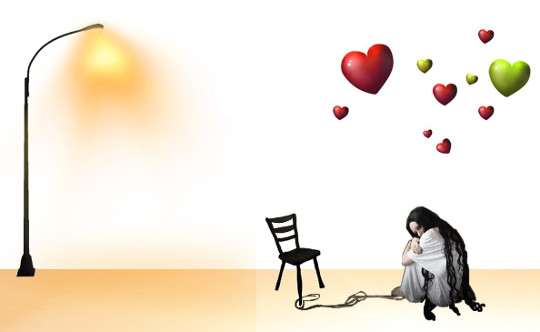
The First Noble Truth of Buddhism states that suffering exists, that there is a constant dissatisfaction that is inherent to life that makes the threat of suffering always present, and that it is our refusal to accept this reality that ultimately turns our pain into suffering.
Most people who seek out Buddhism think that practice will enable them to eliminate their pain and provide them with a state of permanent happiness. But the reality is that all that Buddhist practice will do is help us develop the skills to cope with this constant dissatisfaction and not turn our pain into suffering.
The teachings speak of three truths that mark the existence of suffering, and that understanding them is essential to our ability to thwart suffering.
The First Truth
The first truth of the existence of suffering teaches that due to our body and mind, we will always be experiencing pain and that it is not the pain itself that causes us to suffer but our aversion to experiencing the pain. This aversion actually causes us to suffer over being in pain rather than from the pain itself. The result of this is that we compound our problems by never actually dealing with the issue that caused the pain in the first place.
To remedy this, the teachings direct us to realize that it is up to us to repeatedly practice how to engage our pain and simply be with it without adding anything to it, such as self-pity, judgment, anger, or resentment. By doing this, we are able to see that there is no magic teaching that instantaneously does this for us, or any wondrous level of attainment in our ability to do so, but rather, the more we practice doing it, the more skillful we will become at doing it. Much like a martial artist training physical actions of technique into their muscle memory, our ability to cope with and manage pain actually begins as a physical practice.
When we first encounter Buddhism, the first thing that most of us are introduced to is meditation. As we learn to sit in the meditation posture, the practice of being still and grounding ourselves in our physical experience (the first foundation of mindfulness) teaches us to experience our pain without being swept away by an inner dialogue about it—that rather than being a helpful coping mechanism, the dialogue we add creates the aversion that makes us suffer.
We learn that by engaging the painful experience, and observing it and investigating it, there is a constant ebb and flow of the temporary conditions at its foundation; we learn that eventually these conditions will change and the experience that is dependent on them will change as well, and due to this, there is no need served to be identified with them. As my teacher, Noah Levine, often says, “Pain is a given, but suffering is optional.”
The Second Truth
The second truth of the existence of suffering teaches that our suffering is due to our inability to accept change: we want things to be exactly the way we want them to be. And while it is our lack of flexibility in being able to accept that they are not that causes us pain, it is our continued effort to try and make them conform to the way we want them to be (most of the time in spite of it not even being possible) that turns that pain into suffering.
And then to make matters worse, on the rare occasion that things actually are the way we want them to be, we are so worried about them ending, we suffer and never end up enjoying them in the first place! What we ultimately learn is that if we face things as they are, rather than trying to make them the way we want them to be, we will not suffer.
The Third Truth
The third truth of the existence of suffering teaches what Buddhism calls “conditionality.” Conditionality is the phenomenon of an experience being dependent on a particular set of conditions coming together.
The more we pursue and avoid these conditions as we attempt to find pleasure and avoid pain, the more we get stuck in them, which in turn causes us even more struggle. Or better put, we turn our pain into suffering. It’s not easy, as we often will stumble. But it’s alright to stumble; we all do! Just don’t get angry at yourself when you do.
The true irony of this struggle is that while practitioners swear that they want to be liberated and to transform, they do not see the problem with their trying to transform and be liberated from what they believe to be fixed and permanent. They spend a lot of time and wasted energy “working” on a self that can’t be worked on. And ironically it’s the doing of this “work” that keeps the problem self-perpetuating, as the work rather than eliminating the problem, actually keeps it present and makes it worse by keeping us stuck in it!
A Zen koan speaks to this:
A student said to Bodhidharma, “Please pacify my angry mind!”
Bodhidharma replied, “Show me your angry mind.”
“I can’t,” the student said. “I’m not angry right now.”
“There,” Bodhidharma smiled, “your mind is pacified.”
©2018 by Jeff Eisenberg. All Rights Reserved.
Publisher: Findhorn Press, an imprint of Inner Traditions Intl.
www.innertraditions.com
Article Source
Buddha’s Bodyguard: How to Protect Your Inner V.I.P.
by Jeff Eisenberg.
 While this book is not about personal protection per se, it applies personal protection theory and specific tactics utilized by bodyguards to Buddhist practice, laying out strategies to protect our inner Buddha from attack. With “paying attention” and mindfulness being key concepts of both a bodyguard’s profession and Buddhist practice, this pioneering book speaks to Buddhists and non-Buddhists alike.
While this book is not about personal protection per se, it applies personal protection theory and specific tactics utilized by bodyguards to Buddhist practice, laying out strategies to protect our inner Buddha from attack. With “paying attention” and mindfulness being key concepts of both a bodyguard’s profession and Buddhist practice, this pioneering book speaks to Buddhists and non-Buddhists alike.
Click here for more info and/or to order this paperback book or purchase the Kindle edition.
About the Author
 Jeff Eisenberg is a Grand Master level martial arts and meditation teacher with over 40 years of training and 25 years of teaching experience. He has run his own Dojo for nearly fifteen years and trained thousands of children and adults in the martial arts. He has also worked as a bodyguard, investigator, and director of crisis response in the emergency and psychiatric ward of a major hospital. Author of the bestselling book Fighting Buddha, he lives in Long Branch, New Jersey.
Jeff Eisenberg is a Grand Master level martial arts and meditation teacher with over 40 years of training and 25 years of teaching experience. He has run his own Dojo for nearly fifteen years and trained thousands of children and adults in the martial arts. He has also worked as a bodyguard, investigator, and director of crisis response in the emergency and psychiatric ward of a major hospital. Author of the bestselling book Fighting Buddha, he lives in Long Branch, New Jersey.
Another Book by this Author
at

Thanks for visiting InnerSelf.com, where there are 20,000+ life-altering articles promoting "New Attitudes and New Possibilities." All articles are translated into 30+ languages. Subscribe to InnerSelf Magazine, published weekly, and Marie T Russell's Daily Inspiration. InnerSelf Magazine has been published since 1985.

Thanks for visiting InnerSelf.com, where there are 20,000+ life-altering articles promoting "New Attitudes and New Possibilities." All articles are translated into 30+ languages. Subscribe to InnerSelf Magazine, published weekly, and Marie T Russell's Daily Inspiration. InnerSelf Magazine has been published since 1985.


























